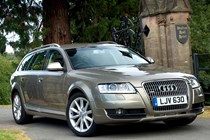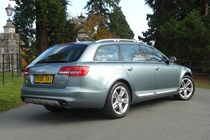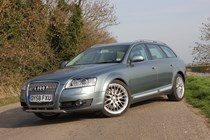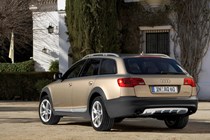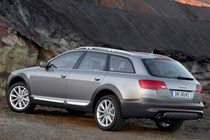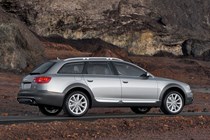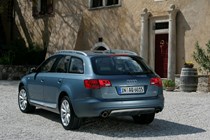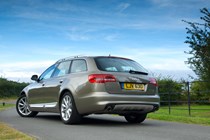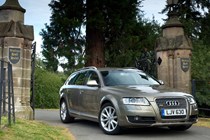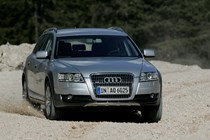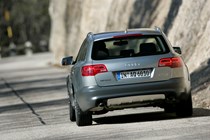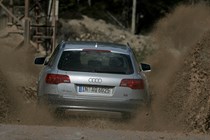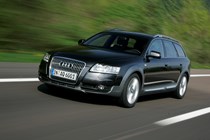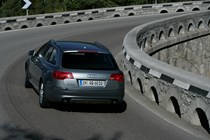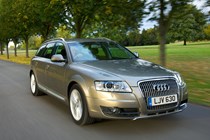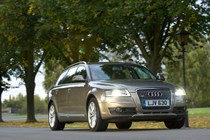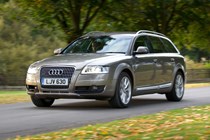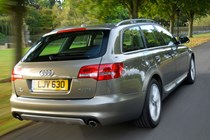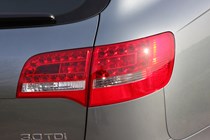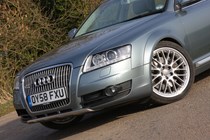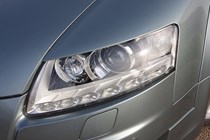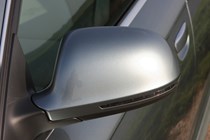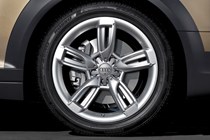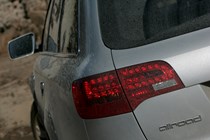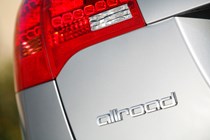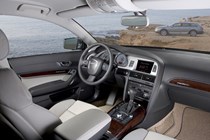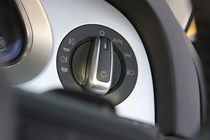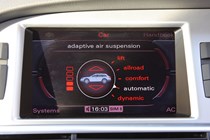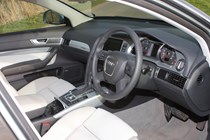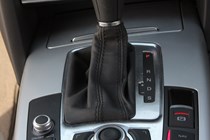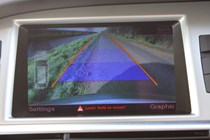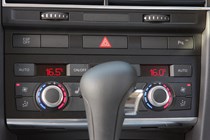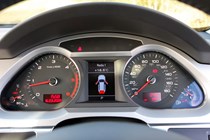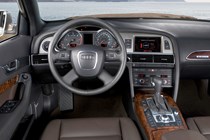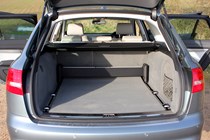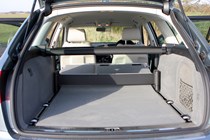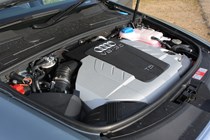Audi A6 Allroad (2006-2011) engines, drive and performance
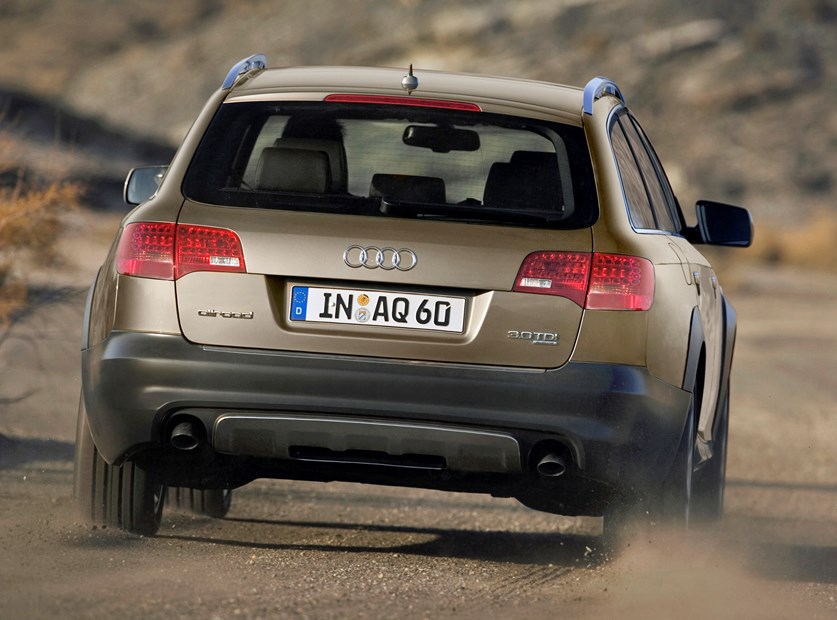
Buyers can choose from 2.7-litre and 3.0-litre TDI diesel engines or 3.2-litre V6 and 4.2-litre V8 petrol engines. It’s the diesels which are the best choice thanks to their combination of decent economy and string pulling power. Our choice is the 3.0 TDI because although both engines are similar in terms of fuel consumption and emissions, there is a noticeable difference on the road where the larger engine is much quicker and smoother.
It’s the best engine in the A6 Allroad line-up as it’s swift – getting to 60mph in 7.8 seconds, punchy and very refined. The 4.2-litre V8 petrol is as quick as you’d expect but very thirsty averaging just 25mpg so best avoided and the 3.2-litre V6 with 256bhp is smooth but needs to be worked hard to get decent pace out of it. All cars comes with a semi-automatic six-speed Tiptronic gearbox while a six-speed manual is available for the 3.0 TDI and 3.2 FSI.
In 2008 the engine-line-up was revised and the 4.2-litre V8 was dropped while the 3.2 FSI was replaced by a supercharged 3.0 TFSI. Both diesel engines were also upgraded with increased power and better economy.
On standard tarmac roads, there’s little to distinguish the Allroad from the Avant estate on which it’s based. The steering is precise, it corners confidently and thanks to quattro all-wheel-drive, it holds the road well. The five-level adaptive air-suspension can be tuned to the driver’s taste, making it firmer for sporty driving or softer for cruising.
This works the Allroad’s advantage on long journeys where it can provide a wonderfully cosseting and smooth ride – even with a full load of passengers and luggage on board. There’s also an ‘Allroad’ setting, which raises the ride height for rougher terrains. This gives it up to 185mm of ground clearance, which also results in increased entrance and departure angles – off-road speak for the steepness of inclines it can take.
The 300mm wading depth is little more than a puddle when compared to traditional 4x4s, but useful for crossing fords or boggy fields.


